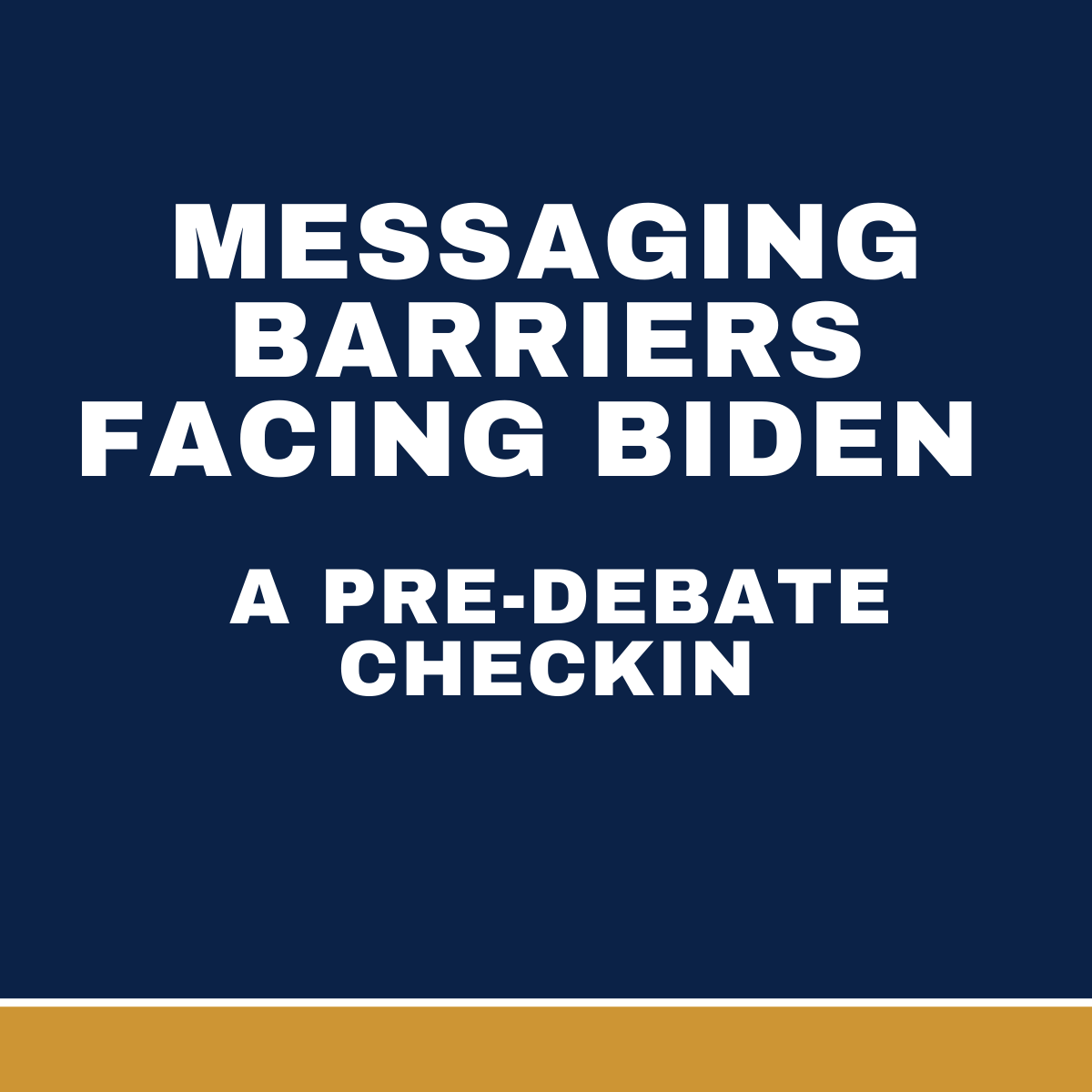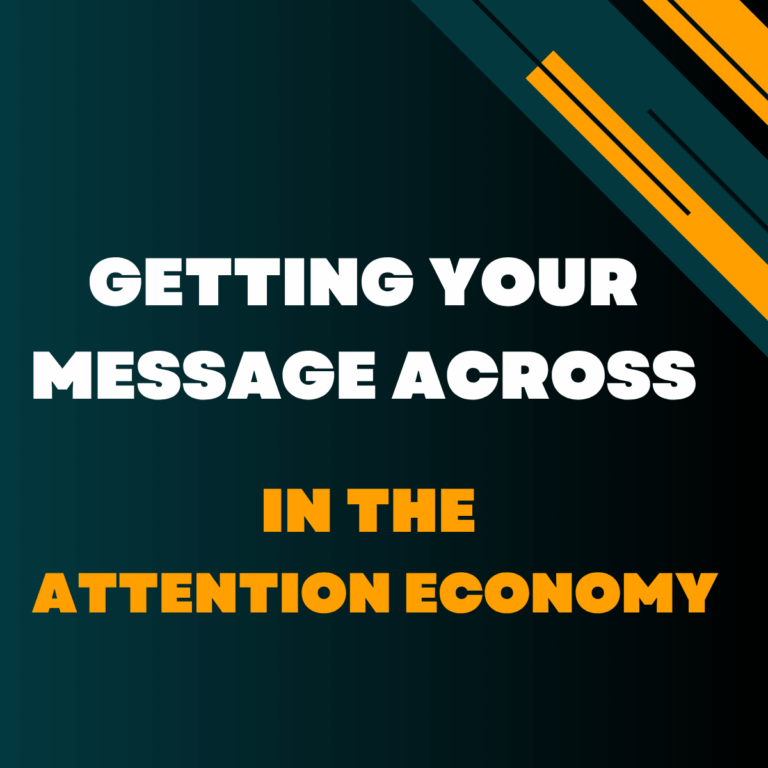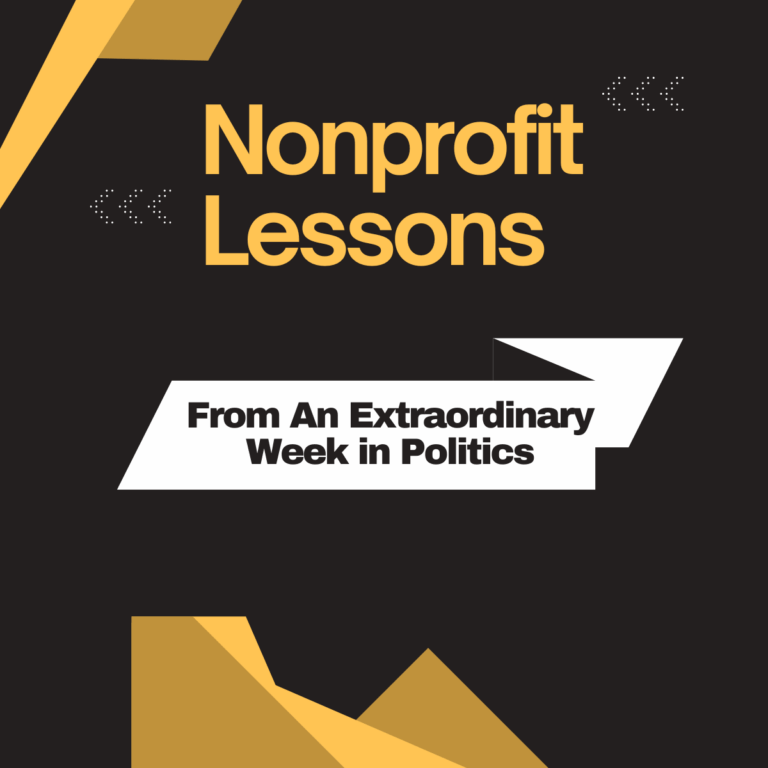A Case Study in Messaging Strategy
With the first debate 10 days away, the Biden campaign faces a key communications challenge: identifying and overcoming barriers — perceptions, attitudes, and emotions stopping people from taking a desired action. It’s a vital messaging task facing every nonprofit. How the Biden campaign uses the debate and other key moments to address three critical barriers to winning peoples’ votes offers a fascinating, high stakes case study about searching for ways to navigate over, through or around critical messaging barriers.

In poll after poll, a significant majority of voters express concerns about 81-year-old President Biden’s age as he seeks another 4-year term. It’s easily Biden Barrier #1. So how can the Biden campaign lessen voter concerns and deflect media attention away from the age issue?
Avoid Defensiveness
It helps when Biden expresses confidence and uses humor when discussing the age issue. One example: During his re-election campaign, Ronald Reagan (at the time America’s oldest president in history) used humor in a debate with the younger, former Vice President Walter Mondale. When asked about the age issue, he replied “I want you to know that I will not make age an issue in this campaign. I am not going to exploit, for political purposes, my opponent’s youth and inexperience.”
Make Age a Two-Candidate Issue
An ABC News poll found that a vast majority of Americans think Biden is too old to serve another term. Fortunately, he’s not running against a youthful challenger. In the poll, 59% of Americans reported thinking both candidates are too old, while a more manageable 27% have the concern about Biden but not Trump.
Contrast Biden’s Age with Trump’s Instability
Voters’ evaluation of the general election choice works more in Biden’s favor when framed in ways that take into account not just the candidates’ age but Trump’s increasingly unhinged behavior. Here’s how Washington Post writer Aaron Blake puts it: “It seems when voters’ frames of reference are age and how sharp a candidate is or presents as being, Biden is at a clear deficit. But when decision-making and judgment are the frame, it’s not such a huge advantage for Trump.”

By all reports, the President and his administration are frustrated by the substantial gap between their actual performance and voter perceptions about its achievements. While cutting across many issues, the gap is most stark – and most challenging in terms of Biden’s re-election prospects – when it comes to the economy.
Here are some ways the President and his supporters could navigate around this barrier.
Abandon “Finish the Job” Rhetoric
The Biden campaign often employs “finish the job” to take credit for accomplishments while acknowledging work yet to be done. I wince every time I hear it for two reasons. First, the phrase suggests significant achieved progress with some work left to clean up loose ends. That just doesn’t align with voter perceptions.
The second even more serious concern: The phrase frames the voting decision as a judgment on Biden’s performance rather than the far more favorable stark, binary choice between Biden and Trump.
Lean Into The Future
Biden is likely to find a more receptive audience if he talks about what he wants to achieve next as opposed to what he wants credit for now. This doesn’t mean abandoning claiming hard-earned wins. It just means positioning those victories as down payments on what can be achieved going forward.Expressing a bold future vision would do two other things. First, it would help deal with age concerns by making it clear how vigorous and ambitious the President is about his second term. And importantly, it would help assure that the Biden message isn’t too Trump-centric. It would tell people that Biden 2024 isn’t just about stopping Trump. It’s about creating a brighter future for all of us.

The third barrier isn’t really about an obstacle to be overcome. It’s more about the risk of not grasping how to effectively deploy an affirmative lever of communications.
Biden and his Democratic allies have correctly emphasized that a Trump victory in November could threaten the very foundations of our democracy. But for some audiences, including the most critical electoral ones, that broad theme is too far removed from peoples’ daily lives.
Here are a couple of ways to avoid talking past those key audiences.
Make the Threat Tangible and Concrete
The broadly stated “existential threat” message works fine for politically-engaged, progressive voters. But for other audiences that follow politics less closely, it may not connect. It would be a lot stronger to make the threat concrete and tangible.
Don’t keep the conversation up in the philosophical heights. Paint vivid portraits of what a Trump assault on democracy will mean in terms of peoples’ day-to-day lives – their family’s health care, their children’s education, their economic security, etc.
Remind People What Constant Chaos Feels Like
If there’s anything people know about Trump, it’s that he creates chaos everywhere he goes. And Trump is guaranteed to provide daily evidence of this throughout the campaign. Biden’s task is to make it clear that this isn’t just some political sideshow people can ignore. It’s something that can upend their lives for four long years.
Conclusion
Next Thursday’s debate is, in many ways, the first major event of the general election. One way to measure it is to see whether the way both candidates perform either sharpens or eases these three critical Biden barriers.









Great points. Celebrating wins while also showing that those victories are laying the groundwork for current work and future goals is such a thoughtful way to show supporter impact. Thanks for sharing.
Thanks Ashley. Next Mondays post has a note about visual storytelling. I always think of you when I write about that